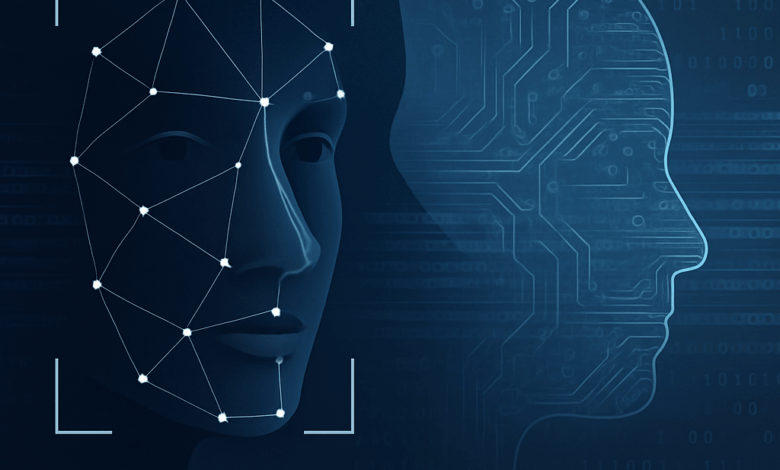
In 2025, you can walk into a store, glance at a product, and an algorithm will instantly analyze your facial expression, estimate your mood, and predict what you’re most likely to buy.
Welcome to the age of AI-powered surveillance—where your behavior isn’t just observed, it’s interpreted, profiled, and stored, often without your awareness.
While artificial intelligence continues to transform how we live and work, it’s also quietly redefining how companies, governments, and platforms monitor us. The question is no longer whether you’re being watched. It’s how, when, and by which algorithms.
So how do you protect your privacy in a world where machines are always learning?
The Rise of AI Surveillance—Subtle, Legal, and Growing Fast
Surveillance used to mean cameras and security guards. Today, it means machine learning systems that track eye movement in stores, monitor typing speed on remote desktops, and analyze sentiment during video calls.
Examples of modern AI surveillance include:
- Retail vision systems monitoring customer behavior in physical stores
- Remote work tools analyzing webcam activity and keystroke patterns
- Emotion AI that attempts to detect trust, fear, or deception
- Mobile apps collecting behavioral signals to train advertising models
These systems are often marketed as productivity boosters or personalization tools—but at scale, they create a digital environment where our actions are constantly evaluated and recorded by machines.
The Data You’re Giving Away (Even When You Think You Aren’t)
Every time you use a smart service—whether it’s a chatbot, a location-based app, or an AI-driven recommendation engine—data is being collected and used to shape how that system responds to you.
AI models today can analyze:
- Keystroke dynamics to detect urgency or hesitation
- Location data to predict routines
- Voice signals to assess emotion
- Facial expressions to score “engagement” or “honesty”
You don’t need to be a celebrity, activist, or whistleblower to be affected. Even average internet users are contributing to vast datasets that power increasingly predictive algorithms.
What Does a VPN App Do in an AI-Driven World?
One of the simplest and most effective tools available to everyday users is the VPN, or Virtual Private Network.
In short, a VPN:
- Encrypts your internet connection so your activity isn’t easily visible to your internet provider, apps, or ad networks
- Hides your IP address and location, reducing the data points available for AI-driven profiling
- Makes it harder for third parties to build a consistent behavioral profile across apps and devices
In the age of AI, where models are trained on massive behavioral datasets, a VPN can disrupt the quality of the data collected about you—making it harder for machine learning systems to learn who you are and how you behave online.
Free Tools That Actually Help
You don’t need a full cybersecurity team to take control of your digital footprint. A few freely available tools can go a long way toward reducing how much usable data you leave behind.
Consider:
- Using privacy-focused browsers like Firefox or Brave with tracker blocking enabled
- Switching to encrypted messaging apps like Signal
- Installing a VPN, especially when working remotely or using public Wi-Fi
If you’re not ready to invest in paid solutions, even a free VPN for PC Windows 10 can significantly limit your exposure when browsing, streaming, or interacting with AI-powered platforms.
Using AI Without Being Used by It
AI isn’t the enemy. It’s a powerful tool. But when deployed without transparency or meaningful consent, it can lead to environments where users unknowingly train systems that may later be used against them—through hyper-targeted ads, algorithmic scoring, or biased decision-making.
To protect yourself:
- Turn off app permissions you don’t need
- Avoid logging into every site using your social credentials
- Log out of AI tools after use
- Use a VPN to obscure your digital signals and location
You don’t need to disappear from the web—you just need to introduce enough friction that your data can’t be easily harvested and turned into training fuel.
Final Thoughts
Privacy in 2025 is no longer just about what you share. It’s about what’s inferred from your behavior—often in real time, by algorithms you never see.
You don’t need to be an engineer or a privacy activist to take action. You just need to understand the systems you’re engaging with and take simple steps to limit their reach.
Because if AI is going to help shape the future, users deserve a say in how—and how much—it learns from them.
About the Contributor
Juli Cooper is a content writer at X-VPN with 7 years of experience in technology and VPN education. She specializes in making complex tech topics accessible to everyday users.




